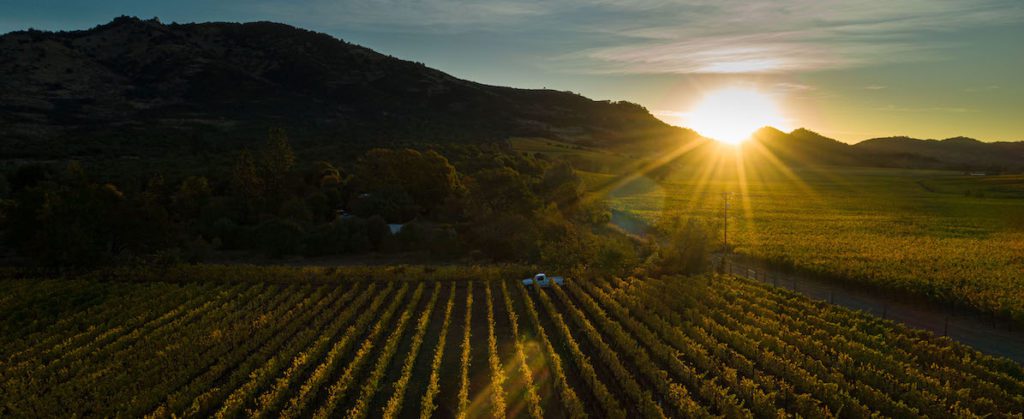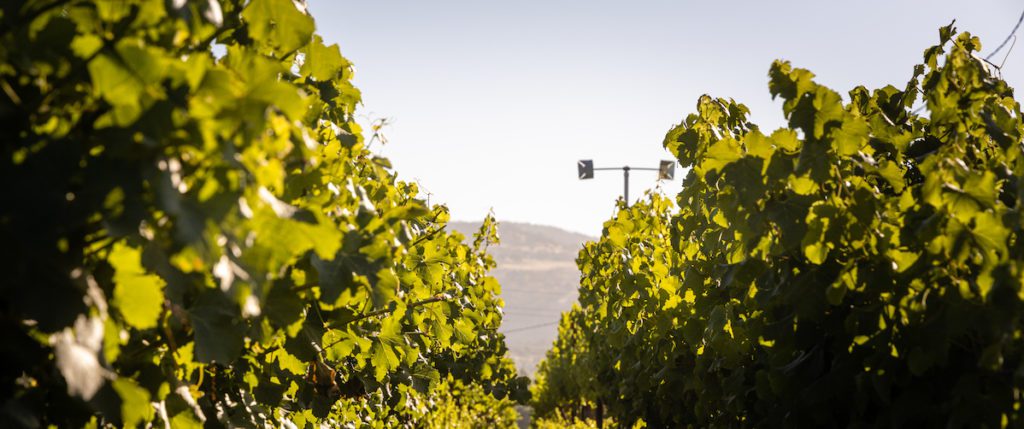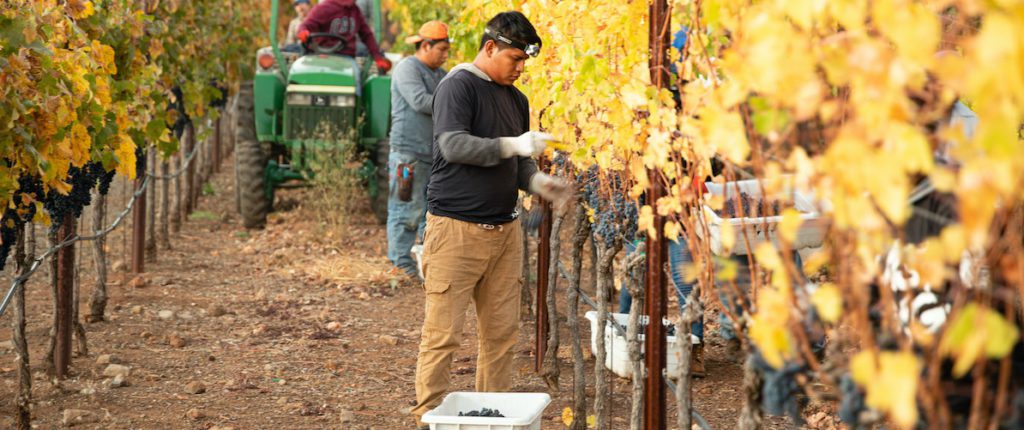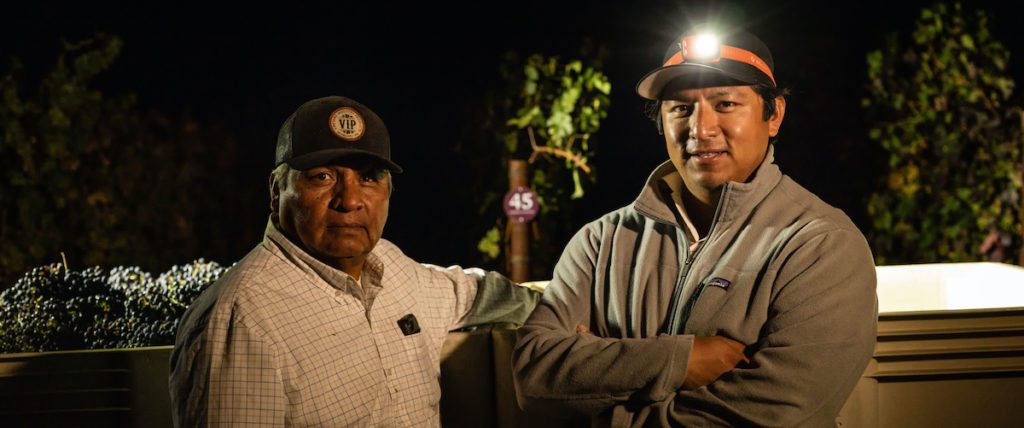Vol 3: Vineyard Views
“As mother nature provides different challenges every year, our vineyard practices are being modified.” ~ Vineyard manager Victor Fuentes, on realizing the potential of Seven Apart Vineyards

The Journal | Vol. 3
Many of the world’s greatest winemakers say that wine is made in the vineyard. This adage is a nod to the philosophy that farm and field directly impact the final product. Victor Fuentes, the vineyard manager here at Seven Apart, has years of experience balancing the challenges and potential of world class vineyards.
“I started working with Stags Ridge Vineyard on Atlas Peak in 2009, just after finishing college. In that time, I’ve learned a tremendous amount from this property,” says Victor. “It has allowed me to gain experience in higher elevation farming along with understanding the nuances of the vineyard’s topography.”
All the labor in Seven Apart vineyards is done by hand, providing Victor and his team the opportunity to become intimate with the vines, soil, climate, and other aspects that make these growing sites outstanding.
Victor says the Seven Apart vineyards have distinct features that make them special in his book.
Stags Ridge Vineyard, Napa Valley
Planted in 1999 on Atlas peak, along the western slope of the Vaca Range facing Pritchard Gap, Stags Ridge bumps elbows with neighbors Pritchard Hill, Stagecoach Vineyard, Cordes Vineyard, and Soda Canyon Ranch Vineyard. These vines have a long heritage of producing top-scoring wines, and the Seven Apart team are the new custodians of this treasured spot, which they farm organically.
When it comes to single vineyard Cabernet Sauvignon, fruit from this area has been revered by such names as Phillip Titus at Acumen Napa Valley, Henrik Poulsen at Alpha Omega, and Heidi Peterson Barrett, John Schwartz, and Jim Barbour’s Au Sommet. Capable of garnering a collection of 90+-point wines, this is a sweet spot for some of today’s most unforgettable (and collectible) bottles from Napa Valley.
Stags Ridge sits above the fog line at over 1,400 feet in elevation, basking in full sunlight throughout the day. The altitude also allows for cooler daytime temperatures than on the valley floor, as well as warmer nights.
The basaltic red volcanic soils tend to be shallow and well-drained, which Victor says “capture a true sense-of-place in every bottle of wine.” The vineyard site is about ten acres, 8.4 of which are planted with primarily Cabernet Sauvignon, and a small amount of Petit Verdot and Cabernet Franc.

Base Camp Vineyard for Cabernet Sauvignon
Base Camp is composed of mature, organically farmed vines which are believed to be around 15 to 20 years old. Over their life cycle, these vines have developed several unique qualities, Victor explains. Fruit concentration is one of them, which means slightly lower fruit yields but with more concentrated wine. Also, the roots of these vines run deep into the soil, which is a mix of sand, silt, clay and gravel, pulling nutrients and water from below the surface, which increases drought tolerance.
The site is about eight acres, half of it planted with vines, mostly Cabernet Sauvignon but also home to Cabernet Franc, Merlot, and several other varieties that are sold to neighboring wineries.
“Following a desire to be good stewards of the land, we farm Base Camp organically, paying close attention to the details in our work to ensure the health of the vines while minimizing the impact we have on the surrounding environment,” adds Victor.
Iconic Napa Vineyard, Iconic Napa Winemaking
Of course now Victor works in partnership with Seven Apart’s winemaker Andy Erickson, but he’s not the first iconic vintner to make wine with Stags Ridge fruit. Victor says that during his tenure with Stags Ridge, the vineyard has played an essential role in some of the most sought-after bottles of wine from Napa Valley.
“I have had the pleasure to collaborate with high-caliber winemakers such as Dave Phinney, Kirk Venge and now Andy Erickson,” recalls Victor. “Working with these winemakers and coming to understand their perspectives on farming, coupled with my experience, has not only helped me to grow the best fruit possible but also bolstered my understanding of how that translates into the bottle.”

2020 and Beyond at Seven Apart
Victor shares that this year has brought new challenges, and that long term concerns are still at hand in Napa Valley. The health pandemic has caused his team to focus on the safety of the vineyard workforce.
“We are meticulous on how our farming operations are being handled from social distancing, daily temperature checks, and continuous education,” explains Victor. He also says that the vineyard team continues to acclimate to slightly warmer temperatures, fires, and drought, meanwhile relying on new technology, gathering vineyard data to contribute to farming practices.
More about Victor
Victor is a Fresno State alumnus with a degree in Viticulture, the first in his family to complete college. His study experience includes summers in Mendoza and Valle del Maule in Chile. Victor’s first job out of college was with Vino Farms as a viticulturist, and after three years there he moved on to Regusci Vineyard Management where he became a vineyard manager and helped his team oversee 700+ acres in different regions of Napa and Sonoma.

Today, Victor works alongside his father Juan. Together they own and run a vineyard management company named after Victor’s mother. Victoria’s Vineyards, established in 2009, specializes in handcrafted wines with an attention to detail. Other winery clients include Lokoya, Cardinale, and Sebastiani.
